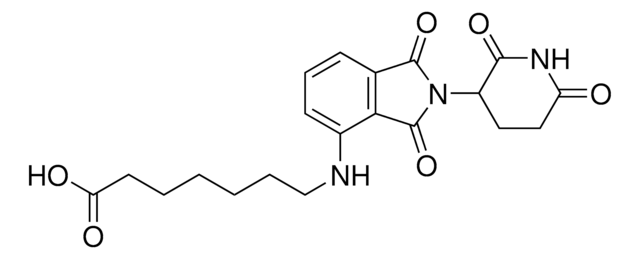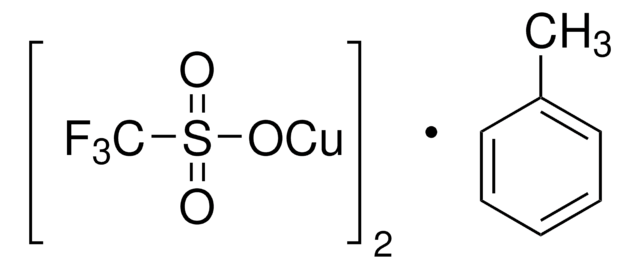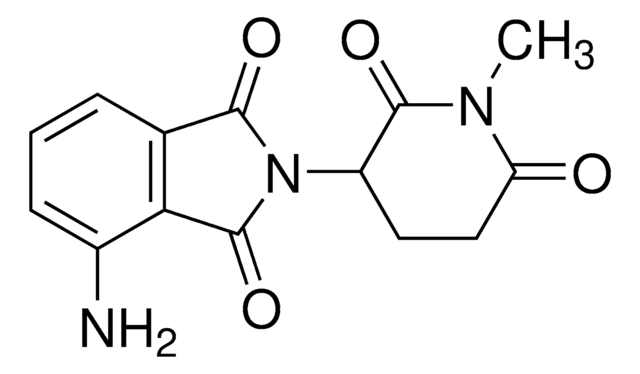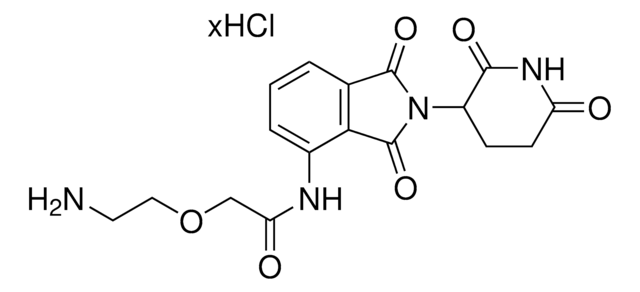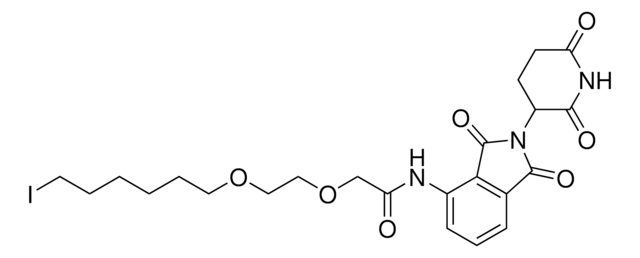おすすめの製品
ligand
pomalidomide
アッセイ
≥95%
形状
solid
反応適合性
reactivity: amine reactive
reagent type: ligand-linker conjugate
官能基
carboxylic acid
保管温度
2-8°C
SMILES記法
O=C(C(CC1)N(C2=O)C(C3=C2C=CC=C3NCCOCCOCCOCCOCCOCCC(O)=O)=O)NC1=O
アプリケーション
Synple自動合成プラットフォーム(SYNPLE-SC002)を用いてCRBN-PEGベースのPROTACを自動化します。
その他情報
法的情報
関連製品
保管分類コード
11 - Combustible Solids
WGK
WGK 3
引火点(°F)
Not applicable
引火点(℃)
Not applicable
適用法令
試験研究用途を考慮した関連法令を主に挙げております。化学物質以外については、一部の情報のみ提供しています。 製品を安全かつ合法的に使用することは、使用者の義務です。最新情報により修正される場合があります。WEBの反映には時間を要することがあるため、適宜SDSをご参照ください。
Jan Code
901828-VAR:
901828-BULK:
901828-50MG:
最新バージョンのいずれかを選択してください:
この製品を見ている人はこちらもチェック
資料
Partial PROTACs are a collection of crosslinker-E3 ligand conjugates with a pendant functional group for covalent linkage to a target ligand.
Partial PROTACs are a collection of crosslinker-E3 ligand conjugates with a pendant functional group for covalent linkage to a target ligand.
ライフサイエンス、有機合成、材料科学、クロマトグラフィー、分析など、あらゆる分野の研究に経験のあるメンバーがおります。.
製品に関するお問い合わせはこちら(テクニカルサービス)





